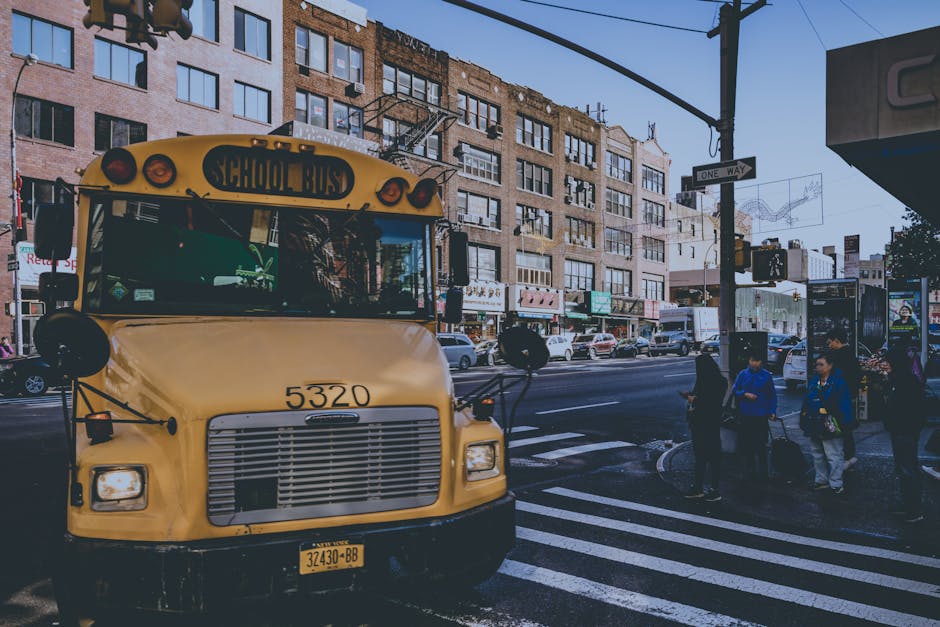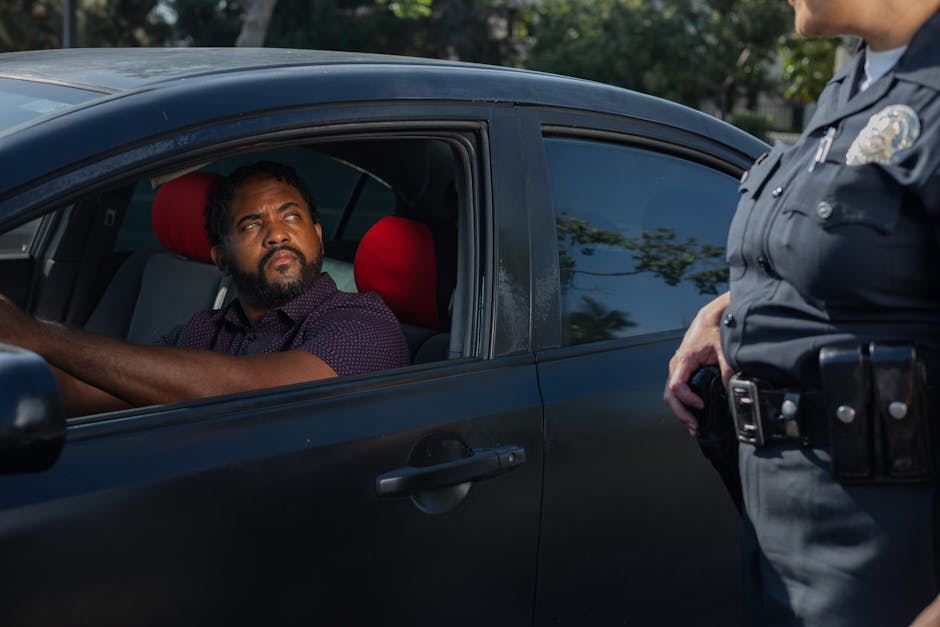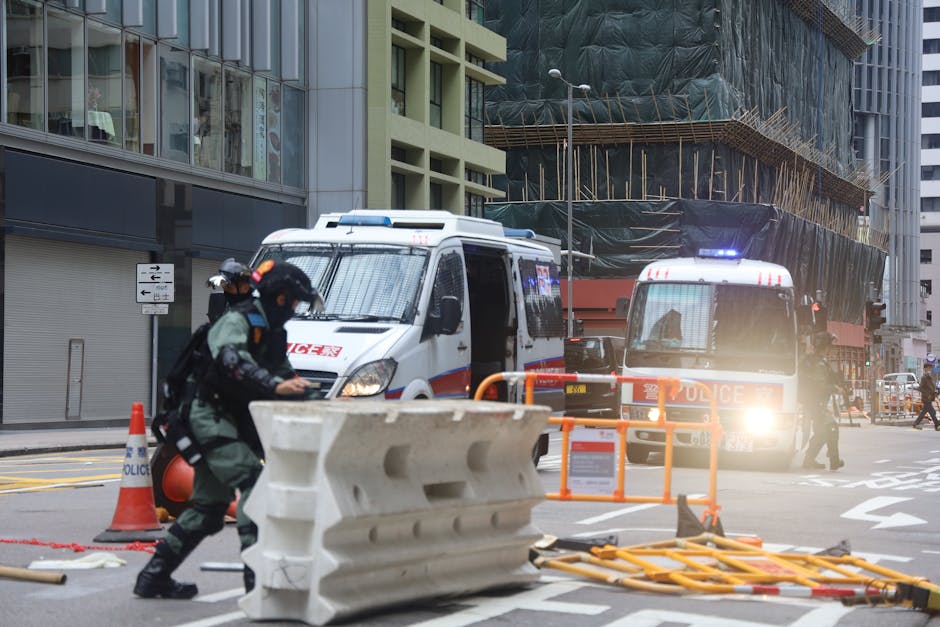 Swipe for more categories
Swipe for more categories 
School Zone Driving Safety Tips
School Zone Driving Safety Tips
As summer comes to an end and the school year begins, it’s crucial for drivers to be extra vigilant on the roads, especially in and around school zones. Children may be excited, nervous, or simply not paying attention to their surroundings, which puts them at a higher risk for accidents. Additionally, increased traffic from parents, buses, and student drivers adds to the overall chaos around schools.
In the interest of keeping our communities safe and well-informed, we’ve compiled a list of essential school zone driving safety tips. This guide will help ensure you’re taking appropriate precautions while driving near schools, ultimately contributing to a safer environment for everyone. So, let’s brush up on our safe driving habits, and ensure the safety of not only our children but everyone on the road.
Stay within the speed limit

Photo by Matthis Volquardsen on Pexels
As we all know, school zones are areas with a higher concentration of pedestrians, especially children. As a responsible driver, it’s crucial to stay within the posted speed limit within these zones and remain alert at all times. Speed limits are typically reduced to 20 – 25 mph in order to ensure the safety of both children and adults near the school area.
Adhering to these lower speed limits not only helps to keep everyone safe, but also allows drivers more time to react to any unexpected movements or distractions that can occur in a busy school zone. Additionally, children are often unpredictable and may dart out into the road without warning. Maintaining a lower speed gives you better control of your vehicle and increases the chances of avoiding an accident.
By staying within the speed limit in school zones, we’re not just complying with the law, but we’re also making an active effort towards creating a safer environment for the students, parents, and teachers. Every effort counts when it comes to protecting our community’s children.
Avoid distractions while driving
As drivers, avoiding distractions is crucial to maintaining safety on the road – especially in school zones. It’s essential to remain focused and keep your eyes on the road at all times.
One common distraction is cell phone usage. Texting and driving is illegal in many states, and can drastically increase the chances of an accident. If you need to make a call or send a message, pull over to a safe location before doing so.
Additionally, refrain from engaging in activities that take your attention away from the road. Adjusting your car’s audio or climate controls, eating, or reaching for items in your vehicle can all lead to potentially dangerous situations.
Always prioritize safety over convenience. Keep both hands on the wheel and your mind on the task at hand – driving. Adhering to these guidelines will help to prevent accidents and ensure the safety of everyone in and around school zones.
Obey traffic signs and signals

As drivers, it’s crucial to always obey traffic signs and signals, especially in school zones where the safety of young pedestrians is at stake. Pay close attention to speed limit signs in school zones, which are typically lower than the surrounding areas, and slow down accordingly. Often, these reduced speed limits are in effect during specific hours, so be sure to heed the posted times.
In addition to speed limits, keep an eye out for school crossing signs, stop signs, and traffic signals. When approaching a crosswalk, be prepared to stop for pedestrians, even if there isn’t a crossing guard present. Remember to always yield to pedestrians, as they have the right of way in most situations.
Finally, be sure to obey school bus signals, including flashing red lights and extended stop signs. It’s essential to stop for buses when required, as kids may be exiting or boarding the bus, and may not be clearly visible. By following these guidelines, we can all do our part to make school zones safer for children.
Be aware of student pedestrians and bicyclists

As the new school year begins, we need to be extra cautious when driving in school zones. Children are likely to be walking, biking, or riding scooters to school, which can create hazardous situations if drivers are not paying close attention.
First and foremost, always be alert and watchful for student pedestrians. Children can be unpredictable and may dart into the street without warning. Slow down and be prepared to stop quickly if necessary.
In addition to watching for pedestrians, keep an eye out for young bicyclists. They may not have the necessary skills to navigate traffic safely and could inadvertently swerve into your path. Give them ample space and remain patient as they find their way.
Remember, our children’s safety is top priority during this busy time of year. By staying vigilant in school zones and respecting the rules of the road, we can all help ensure safe journeys for everyone involved.
Always come to a complete stop at stop signs

As parents and responsible drivers, it is crucial to prioritize the safety of children in school zones, and one significant aspect of this is always coming to a complete stop at stop signs. Far too often, drivers either fail to stop or make rolling stops in school zones, increasing the potential for tragedies to happen.
A complete stop means that your vehicle stops moving entirely, and all your wheels come to a halt. Waiting for a few seconds before starting again allows you time to thoroughly check for any oncoming pedestrians, specifically children, who may be crossing the street.
This small yet vital action can help reduce the risk of accidents in school zones, ensuring that our children can travel to and from school safely. Remember, our driving choices impact the lives of others, and coming to a complete stop at stop signs is a simple and powerful way to make a difference in the safety of our communities.
Keep a safe distance from buses and other vehicles

As drivers, it’s essential to maintain a safe distance from buses and other vehicles as we approach or navigate through school zones. Keeping a safe gap allows you to possess ample time to react to sudden stops, turns, or any unexpected maneuvers that may happen when children are around.
When driving behind a school bus, ensure you maintain a minimum of 10 vehicle lengths behind it. This will give you enough space and time to stop when the bus comes to a halt to load or unload children. Remember, school buses make frequent stops along their routes, so maintaining a healthy distance is crucial for the safety of both the students and drivers alike.
Additionally, it’s important to stay cautious and slow down within the vicinity of parked vehicles, especially near schools. Young children might attempt to quickly cross the street between them, so by keeping a safe distance, you will be more prepared to react if needed. Overall, giving yourself adequate space in a school zone can significantly contribute to everyone’s safety.
Plan for extra travel time during school hours

As schools begin to open their doors once again, it’s crucial to plan for extra travel time during school hours. With more of our younger community members hitting the streets as pedestrians and cyclists, expect increased traffic and potential delays in your daily commute.
By allocating additional time for your trips, not only will you avoid the hassle and stress of being late, but you will also be able to drive more cautiously and attentively. Remember, young children may often be unpredictable – they could dart out into the street without warning or fail to notice an approaching vehicle.
To ensure everyone’s safety and a stress-free driving experience, make it a habit to leave a bit earlier than usual when traveling near schools. This small adjustment will allow for a smoother ride and promote safer roads for all.
Be cautious and patient during drop-off and pick-up times

As parents, we understand the importance of ensuring the safety of our children during drop-off and pick-up times at school. Patience and caution are crucial in these busy zones, where young pedestrians and drivers converge.
First and foremost, arrive early to avoid the rush of cars around your child’s school. This allows for a more relaxed and secure environment when navigating traffic.
Additionally, be sure to follow designated routes and patterns for drop-offs and pick-ups. Schools establish these paths to help maintain the flow of vehicles and keep children safe.
Stay alert and watch for pedestrians, especially young children who may not be visible between parked cars. Also, be prepared for sudden stops as kids tend to be unpredictable.
Lastly, always yield to school buses and crossing guards, demonstrate courteous driving behavior, and avoid distractions such as cell phones. By practicing patience and caution during these critical times, we can create a safer environment for all of our children.


